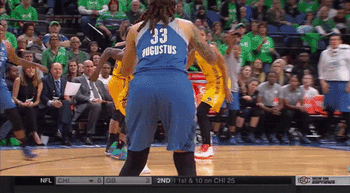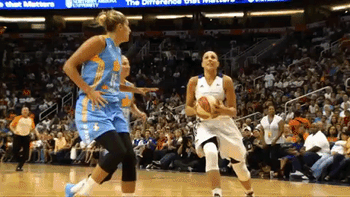A look back on the history of the WNBA
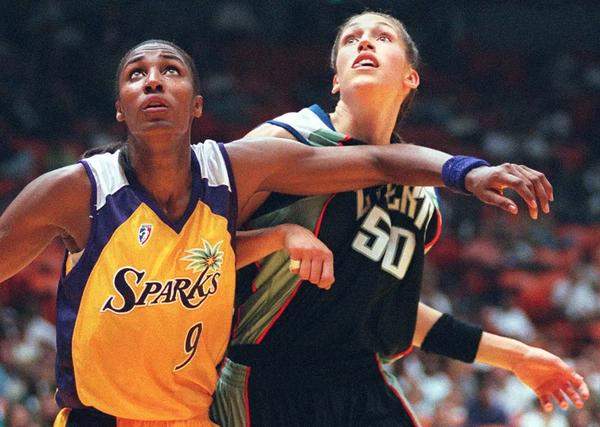
🌅 The beginning
On April 24th, 1996, the NBA board of governors approved the concept of a women’s basketball league, 50 years after the NBA was founded. And the timing couldn’t have been better: Team USA nabbed a historic gold at the Atlanta Olympics that summer, a flawless segway into the WNBA’s official tip-off on June 21st, 1997.
Notably, the W wasn’t the first pro women’s basketball league in the U.S. — that title belongs to the now-defunct Women’s Basketball League (WBL) — but the association was the first (and only) pro women’s basketball league to receive full backing from the NBA.
The league’s inaugural season featured eight teams — the Charlotte Sting, Cleveland Rockers, Houston Comets, and NY Liberty in the Eastern Conference, and the LA Sparks, Phoenix Mercury, Sacramento Monarchs, and Utah Starzz in the Western Conference.
- Two teams were added in 1998 (Detroit Shock, Washington Mystics), with two more joining the fold in 1999 (Orlando Miracle, Minnesota Lynx). The league ballooned to as many as 16 teams from 2000 to 2002 before settling on its current 12-team format in 2009.
The debut game was one for the history books: The Liberty defeated the Sparks 67–57 in front of a crowd of more than 14K fans. And the league tipped off with a plethora of TV deals, including ones with NBC and ESPN — the excitement for women’s pro hoops in the U.S. was palpable.
After its creation, the WNBA had some competition from the American Basketball League (ABL), which began play in 1996. However, the ABL folded in 1998, sending an influx of more top-tier talent, including legend of the game Dawn Staley, to the W. The league’s housed the world’s best hoopers ever since.
🏆 The WNBA’s top teams through the years
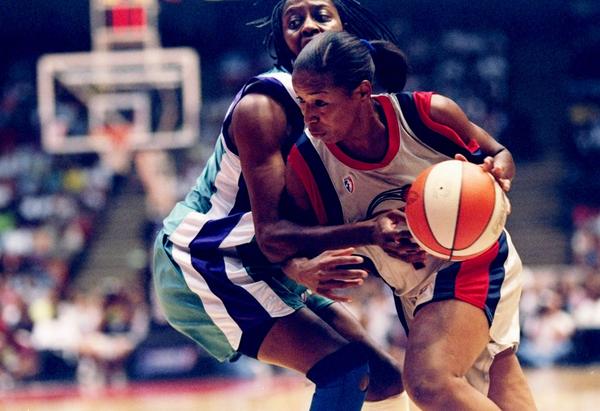
☄️ Houston Comets dominate first four seasons: Led by women’s hoops’ original Big Three — Sheryl Swoopes, Tina Thompson, and Cynthia Cooper — the Comets won the first four league championships, posting an impressive 98–24 regular-season record over that time.
- Four-time Finals MVP Cooper retired (for the first time) in 2000, extinguishing the Comets’ dynasty in the process, but not before the squad became the first pro women’s sports team to visit the White House.
✨ Lisa Leslie and the LA Sparks fly: After playoff losses to the Comets in 1999 and 2000, the Sparks shined in the years that followed, winning back-to-back championships behind three-time league MVP Leslie. But the superstar’s legacy was bigger than her jam-packed hardware case: Leslie became the first WNBA player to dunk in a game in 2002. Icon behavior.
💥 A Shock-ing story in Detroit: Looking for a women’s hoops glow-up for the ages? Enter: the Detroit Shock. The Shock posted an abysmal 9-23 record in 2002 before completely shuffling their roster in the offseason — and boy, did it pay off. The squad won three titles in six seasons, including the 2003 championship in front of a WNBA-record 22,076 fans.
⛈️ A Storm in Seattle: The Storm were down bad before using back-to-back No. 1 picks to select three-time WNBA MVP Lauren Jackson in 2001 and league legend Sue Bird in 2002. From there, the Storm were a perennial powerhouse, winning two history-making championships in the 2000s.
- Their first title in 2004 made Anne Donovan the first woman coach in WNBA history to win a championship, while the 2010 title was a crash course in domination: They posted a perfect 17-0 regular-season home record and three straight sweeps to take home the trophy.
🪐 The Phoenix Mercury become celestial: The Mercury selected Diana Taurasi with the No. 1 pick in the 2004 draft, and the franchise (and doors everywhere) were never the same. Taurasi, alongside Cappie Pondexter, and her partner-in-everything, Penny Taylor, elevated the franchise to new heights, as Phoenix secured titles in 2007, 2009, and 2014.
🐱 The dynastic Minnesota Lynx: When you draft “the greatest winner in women’s basketball,” success inevitably follows, and that’s exactly what happened in Minnesota. Though Maya Moore’s W tenure lasted only eight seasons, she led the Lynx to six Finals appearances and four championships.
- But every dynasty has a bitter rival — for the Lynx that was the Candace Parker–led LA Sparks. The squads battled in back-to-back WNBA Finals in 2016 (won by the Sparks) and 2017 (won by the Lynx), with both series needing a spicy championship-deciding Game 5.
⚖️ Since then, it’s been a bit of a parity party — but two names stand out from the rest. Breanna Stewart, who led the Seattle Storm to two championships in 2018 and 2020, and reigning MVP A’ja Wilson, who catapulted the Las Vegas Aces to the league’s top spot in 2022 and 2023. Needless to say, today’s iteration of the W is in exceptional hands.
🗣️ Changing the game off the court
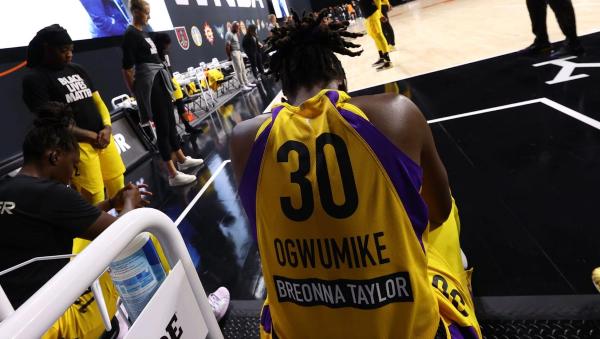
Since its inception in 1997, the W has been one of the most progressive pro sports leagues in the world — being game-changers on and off the court is part of the players’ DNA.
The Women’s National Basketball Players Association (WNBPA) set the standard for collective bargaining agreements (CBA), inking the first-ever CBA in women’s sports in 1999. As the longest-running union in women’s pro sports, the WNBPA continues to advocate for player-first CBAs, including 2020’s groundbreaking agreement that’s set to expire in 2027.
- But the WNBPA can opt out and kickstart renegotiations at the end of this season to fast-track the improvement of player pay structure, pregnancy protection, revenue sharing, and more.
Not only do the league’s players advocate for themselves, they champion the rights of others. WNBA athletes have always been leaders in advocating for social change, but this has never been more evident than during 2020’s global reckoning on racism.
- When the W’s 2020 season inside the Bradenton, Florida–based “Wubble” started in July, the players came together to dedicate the season to Breonna Taylor, the 26-year-old Black woman who was killed by police inside her own home in March 2020.
- Former Atlanta Dream co-owner and U.S. Senator Kelly Loeffler openly opposed their advocacy, but the players rallied together, successfully campaigning for her opponent in that year’s election. After she lost her senate seat, Loeffler sold her stake in the Dream.
It’s always been bigger than basketball, but no one walks the walk better than the W.
🕶️ Looking forward
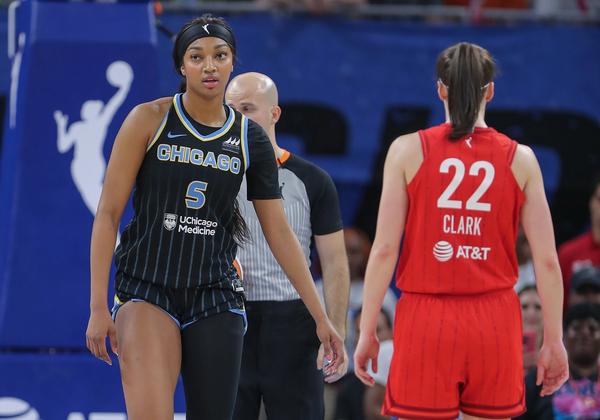
From dispersal drafts to expansion drafts, the league has had its fair share of ups and downs, but this new era of women’s basketball is undoubtedly here to stay.
As the league prepares to add the Golden State Valkyries in 2025, and then franchises in Toronto and Portland in 2026 (with hopes of expanding to include a 16th franchise soon thereafter), women’s basketball has never been more popular — and they have the attendance records and shoe sales to prove it.
And while the next generation of women hoopers are more than ready to take the reins, the league’s rich history has paved the way for the W we know and love today.
Enjoying this article? Want more?

Sign up for The GIST and receive the latest sports news straight to your inbox three times a week.

